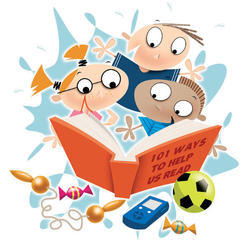Curriculum
 Reading:
Reading:
The Ortin Gillingham approach and Wilson Fundations systems are used to teach phonics. These are research-based systematic programs used to explicitly teach students how to accurately and fluently decode and spell. On a daily basis, students receive instruction in decoding, vocabulary, and reading fluency. Reading Comprehension strategies are also explicitly taught on a daily basis with a focus lesson. Project Read’s Story Form Literature Connection is used to teach reading comprehension with the following six strategies: monitoring comprehension, using graphic semantic organizers, answering questions, generating questions, recognizing text structure, and summarizing/synthesizing the important ideas in text. Essential elements of the curriculum include the story puzzle, which helps students recognize text structure, monitor comprehension, summarize important events, and determine the meaning of a story. The puzzle is a concrete way to help students gain understanding of abstract literary elements. Questions to ask about the story focus students’ attention on what they will learn and help them to continue to think actively as they read. Students also analyze stories against Bloom’s Taxonomy to help them develop critical thinking skills. Story flavors are taught to help students learn about story types and genres. Finally, students can discover their personal views and values through exposure to a variety of award winning literature and application of reading skills and strategies.
Taken from: Greene, Victoria E. & Enfield, Mary Lee, Ph.D. Story Form Literature Connection. Bloomington, MN. 2003.
Links
 Math:
Math:
Math lessons are designed and aligned with the common core standards. Each lesson is presented with a multisensory approach in order to benefit all learners. This approach is used to help students demonstrate an understanding of new concepts, master basic skills, and apply mathematical knowledge to solve increasingly complex problems. Daily Math word problems are solved using multiple strategies using numbers, drawings, diagrams and math vocabulary. Weekly math assessments drive explicit and systematic instruction.
 Writing:
Writing:
Multi-Sensory systematic writing programs are used to model the process of writing with the use of visuals and graphic organizers. A focus lesson is taught daily on specific skills. Children practice writing and develop final pieces for multiple audiences. Specifically, students compose Personal Narratives, Biographies, Fictional, Expository, Poetry and Persuasive writing pieces.
Writing instruction can also include but is not limited to:
- journal writing
- literature responses
- writing to prompts
- book reports
- essay writing
- story format
This site provides information using PDF, visit this link to download the Adobe Acrobat Reader DC software.
